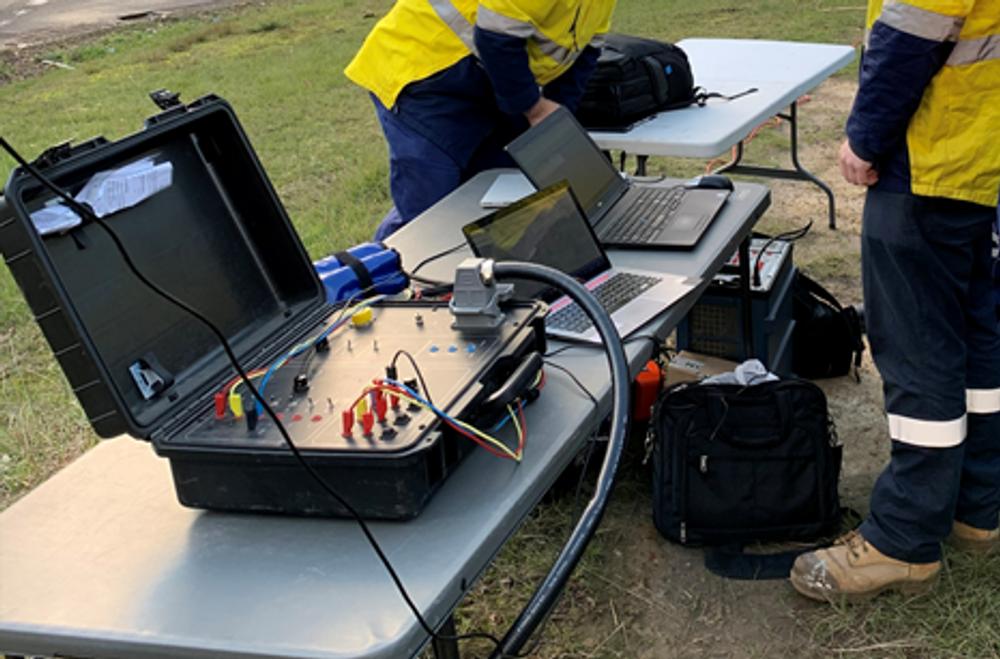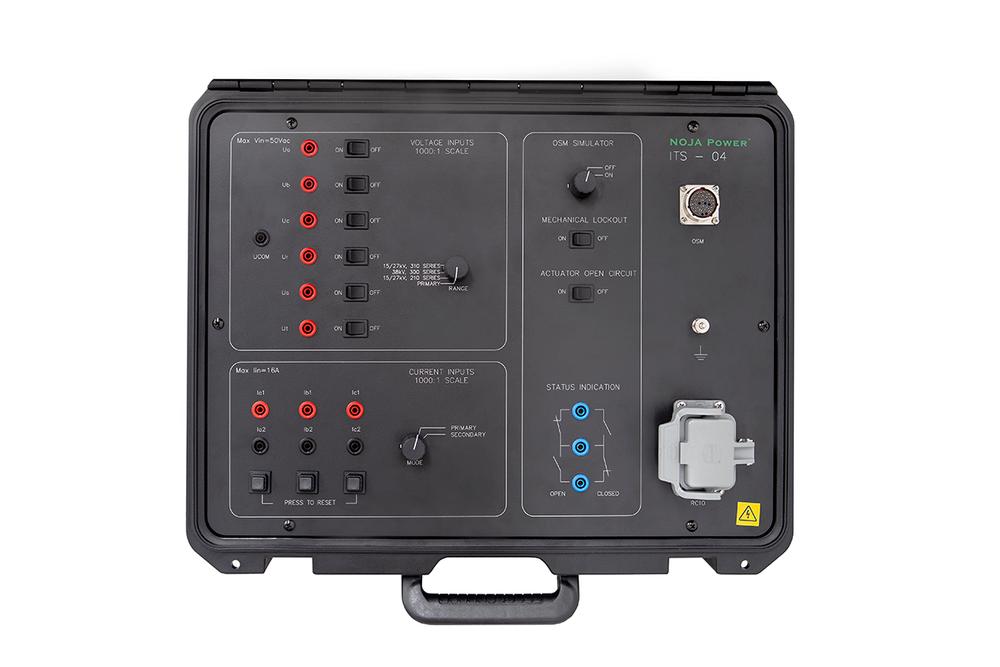Secondary injection is a common commissioning task for electricity network protection and control assets.
For protection assets, the primary goal is to test and validate the protection settings of the equipment, providing evidence that the equipment is correctly configured and will operate to design when faults occur.
Pole mounted reclosers also land in the category of protection equipment to be tested, and NOJA Power’s OSM Recloser system is no different.
For utility organisations that elect to conduct secondary injection into their NOJA Power OSM Recloser system installations, an Interface Test Set is required.
These are known as an ITS, where the suffix number describes the version and application of the product.
The current model is ITS-04, and earlier versions of the ITS are designed to simulate the sensor front end of earlier generations of NOJA Power OSM Recloser.
What is the difference between Primary, Secondary and Tertiary injection testing?
All these methods of injection testing involve presenting a signal to the protection system, and verifying the system response.
For example, if a simple overcurrent relay is designed to operate at 100 A primary current, a technician can provide a simulation injection of 100 A to the system and check the response of the device. For a complete test, additional points below and above the test point verify that it does not act on currents below this level, and continues to operate at higher levels.
The designation of Primary, Secondary and Tertiary injection describes where the injection occurs.
Primary injection is to apply primary current and voltage to the circuit breaker, and to check the response of the entire system.
Secondary injection is the application of signals on the secondary side of the primary equipment.

Tertiary injection is the simulation of digital signals within the relay, which removes the Analogue to Digital Converters, signal path and primary equipment sensors from the test scope.
Primary injection is the only test that provides a comprehensive review of the entire system. This is why primary injection is conducted at NOJA Power’s factory on every device, to ensure it is fully functional.
However, primary injection is not practical in the field, as generating high voltages and currents at site is an expensive requirements and generally beyond the scope of reasonable testing.
Secondary injection allows for testing of almost the entire system, except the primary sensors, providing a reasonable trade off in testing cost and equipment assurance.
Lastly, tertiary injection is a software simulation. This is achieved using software simulators connected to the relay, such as NOJA Power’s CMS Software package.
Tertiary injection is generally used to verify new settings in an office or lab environment.
What is the ITS used for?

Quite simply, secondary injection testing.
The ITS-04 allows technicians to inject voltage and current signals into the NOJA Power RC Series controls, to check protection timing and responses to these signals.
The ITS includes front end protection for the sensitive electronics of the Recloser controller. This protection provides utilities with assurance that the injection of currents into the system will not damage the recloser controller.
Furthermore, the ITS provides a simulator for the primary switchgear. This simulator can be connected to the injection test set to check timings of the response.
Can I direct inject into an RC Recloser Controller?
No, because of the risk of damage to the RC Recloser Controller. This activity would void the warranty of the equipment.
NOJA Power’s OSM Recloser system is designed with surge immunity built into the OSM Recloser and the sensor chain.
If an injection is made directly into the RC Recloser Controller, this protection is bypassed, causing a risk of damage to the equipment.
The ITS System replicates the protection of the sensor signal chain, allowing for safe injection into the system without risk of damaging the RC Recloser Controller electronics.
Which ITS is right for my RC Recloser Controller?
For the OSM210, OSM300 and OSM310 generation NOJA Power OSM Recloser, the correct device is the ITS-04.
The ITS-03 had two variants, one for testing OSM 210 and OSM 300 systems, and the other for testing OSM310 and OSM 300 systems
The ITS-04 harmonises these variants, offering the ability to test OSM210, OSM300 and OSM310 generation recloser systems with the single device.

